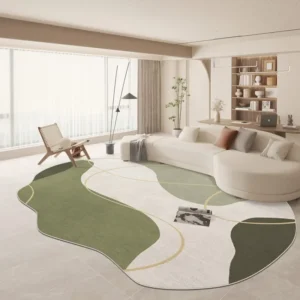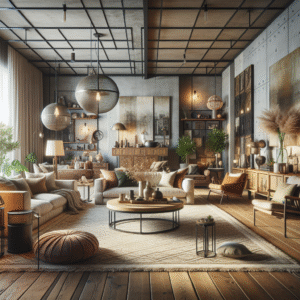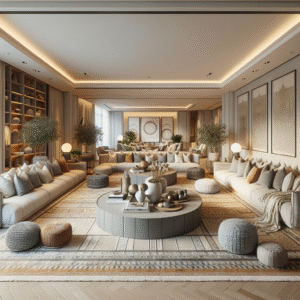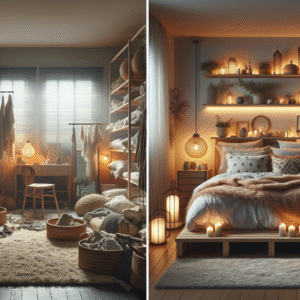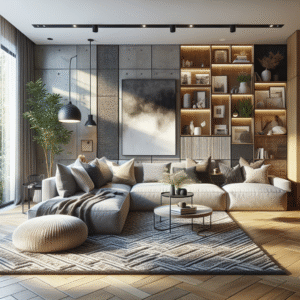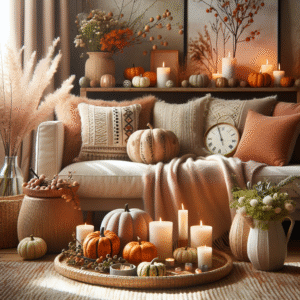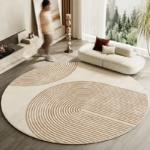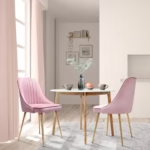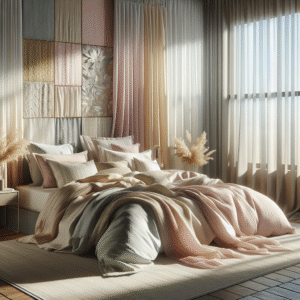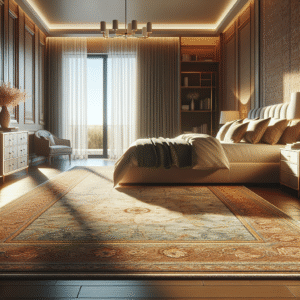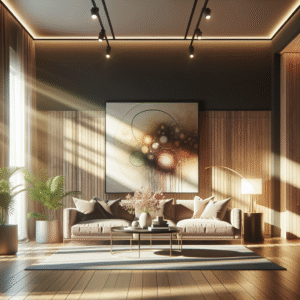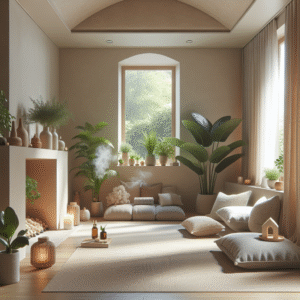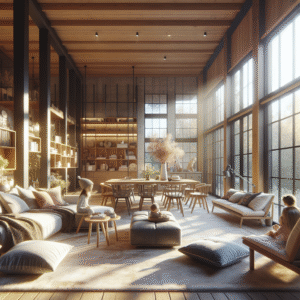In a world overwhelmed by noise, clutter, and distraction, how do you find peace? Minimalist design for mindful living offers a refreshing solution. It’s not just about having less; it’s about making room for more of what truly matters. This article explores how minimalism can enhance your life, reduce stress, and create a serene environment.
By exploring the principles of minimalist design, you will gain insights into organizing your living space, simplifying your routines, and ultimately, fostering a mindful lifestyle. Ready to transform your home and mindset? Let’s dive in!
Understanding Minimalism: A Philosophy for Modern Living
Minimalism transcends aesthetics; it’s a lifestyle choice rooted in intentionality. At its core, it promotes the idea of prioritizing experiences over possessions. By choosing minimalism, you embrace a life focused on quality rather than quantity.
The Principles of Minimalist Living
- Intentionality: Make conscious decisions about what to include in your life.
- Quality over Quantity: Choose fewer, high-quality items that bring joy.
- Clarity: Create spaces that promote focus and calm.
- Simplicity: Eliminate the unnecessary to highlight what matters most.
Why Minimalism Is Good for Your Mind
Studies show that clutter can lead to anxiety and decreased focus. Embracing minimalist design helps clear both your physical and mental space.
Designing Your Minimalist Space
Creating a minimalist home doesn’t mean sacrificing style—it means embracing simplicity and functionality. Here are key elements of minimalist design:
Color Palette and Lighting
Minimalist spaces often utilize a neutral color palette, promoting calmness and relaxation. Consider natural light and well-placed lamps to enhance ambiance.
Furniture Selection
Choose multifunctional and essential furniture pieces. For example, a sofa bed can save space and add versatility.
Decluttering Tips
- Start with one room at a time.
- Use the “one in, one out” rule to maintain balance.
- Donate or sell items that no longer serve you.
The Intersection of Minimalism and Mindfulness
Mindfulness encourages living in the moment, while minimalism creates a physical environment that supports this practice. How can these two philosophies work together seamlessly?
Create Daily Mindfulness Rituals
Incorporate rituals such as meditation or yoga in uncluttered spaces to deepen your mindfulness practice.
Intentional Consumption
Applying mindfulness to your shopping habits can lead to a more intentional life. Ask yourself: Do I need this? Will it enhance my life?
Real-Life Success Stories: Minimalism Transforming Lives
Many individuals have experienced profound transformations through minimalism. One notable example is Joshua Fields Millburn, who co-founded The Minimalists, inspiring millions to simplify their lives.
Case Study: How Minimalism Changed Lives
Case studies reveal stress reduction, increased focus, and enhanced creativity as common themes among individuals who embraced minimalist design.
Implementing Minimalism: A Step-by-Step Guide
Ready to start your minimalist journey? Follow this simple guide:
Step 1: Assess Your Space
Begin by evaluating your current living space and identifying clutter zones.
Step 2: Set Clear Goals
Define what you hope to achieve through minimalism—whether it’s reduced stress, a more functional space, or more time for hobbies.
Step 3: Start Small
Focus on one area at a time, making incremental changes. This prevents overwhelm and fosters a sense of accomplishment.
Maintaining Your Minimalist Lifestyle
Adopting minimalism is an ongoing journey rather than a one-time event. To maintain your minimalist lifestyle, consider these tips:
- Regularly evaluate your belongings and habits.
- Embrace experiences over material goods.
- Stay connected with minimalist communities online for inspiration and support.
FAQs About Minimalist Design for Mindful Living
What is minimalist design?
Minimalist design emphasizes simplicity and functionality, often utilizing a neutral color palette and essential furniture pieces to create serene spaces.
How can I start living a minimalist lifestyle?
Begin by decluttering one area at a time and being intentional about what you bring into your life. Focus on quality over quantity.
Is minimalism the same as frugality?
While both involve making intentional choices about your finances and belongings, minimalism is more about enhancing life quality, not solely about saving money.
Can minimalism improve mental health?
Yes! Reduced clutter often leads to lower stress levels, enhanced focus, and a more peaceful state of mind.
How does minimalist design support mindfulness?
A minimalist environment fosters calmness and clarity, allowing you to focus on the present moment and engage in mindfulness practices.
Conclusion & Next Steps
Minimalist design for mindful living isn’t just a trend; it’s a lifestyle choice that fosters peace and clarity. As you strip away excess, you create space for what truly matters in life.
Ready to embark on your minimalist journey? Begin with small changes today. For more tools and resources, check our related articles that guide you deeper into the realms of minimalism and mindful living.
Content Disclaimer
The information provided in this article is for educational purposes only and should not be considered professional advice. Consult with a specialist for personalized guidance.
Categories
- Accent Walls & Ceilings (10)
- Art Curation & Gallery (25)
- Bedding Style Trends (41)
- Bedroom Makeover (30)
- Bohemian & Eclectic Styles (10)
- DIY & Budget-Friendly Decor (9)
- Eco-Friendly Design (10)
- Furniture Care (29)
- Home Decor & Design Ideas (101)
- Home Wellness Spaces (10)
- Integrated Outdoor Living (9)
- Kids and Nursery Decor (10)
- Living Room Decor (30)
- Minimalist & Japandi Style (13)
- Mix & Match Techniques (29)
- Modern & Contemporary Design (9)
- Rug Sizing & Placement (29)
- Seasonal Home Decor (32)
- Small Space Solutions (14)
- Wall Art & Painting Tips (32)
Recent Posts
Recent Comments
Archives
Product Gallery
-
 African Grassland Animal Scenery Poster Autumn Canvas Painting Lion Zebra Giraffe Prints Pictures for Modern Home Room Decor
African Grassland Animal Scenery Poster Autumn Canvas Painting Lion Zebra Giraffe Prints Pictures for Modern Home Room Decor
-
 Large Area Green Rugs for Bedroom Nordic Living Room Decoration Shaped Carpet Irregular Plush Lounge Rug Home Thick Washable Mat Rated 5.00 out of 5$57.07 – $359.83Price range: $57.07 through $359.83
Large Area Green Rugs for Bedroom Nordic Living Room Decoration Shaped Carpet Irregular Plush Lounge Rug Home Thick Washable Mat Rated 5.00 out of 5$57.07 – $359.83Price range: $57.07 through $359.83 -
 Nordic Style Rugs for Bedroom Morandi Living Room Decoration Carpet Large Area Geometry Lounge Rug Home Cloakroom Non-slip Mat Rated 5.00 out of 5$40.98 – $620.81Price range: $40.98 through $620.81
Nordic Style Rugs for Bedroom Morandi Living Room Decoration Carpet Large Area Geometry Lounge Rug Home Cloakroom Non-slip Mat Rated 5.00 out of 5$40.98 – $620.81Price range: $40.98 through $620.81







